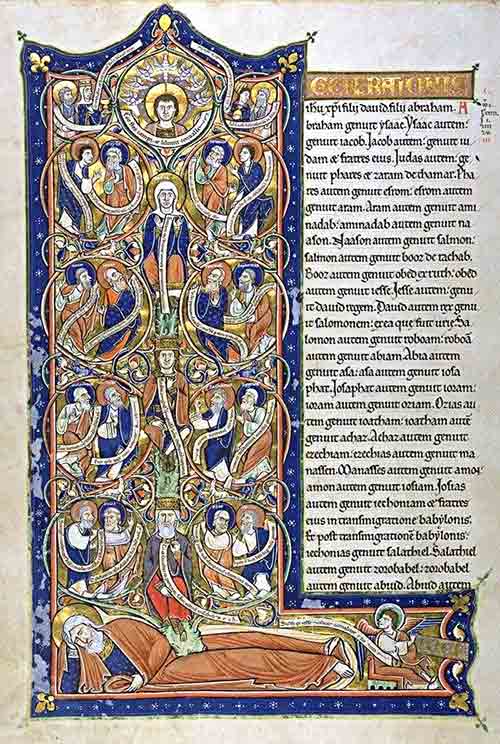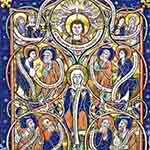
So all the generations from Abraham to David are fourteen generations; and from David to the deportation to Babylon, fourteen generations; and from the deportation to Babylon to the Messiah, fourteen generations. (Matthew 1:17)
πᾶσαι οὖν αἱ γενεαὶ ἀπὸ Ἀβραὰμ ἕως Δαυὶδ γενεαὶ δεκατέσσαρες καὶ ἀπὸ Δαυὶδ ἕως τῆς μετοικεσίας Βαβυλῶνος γενεαὶ δεκατέσσαρες καὶ ἀπὸ τῆς μετοικεσίας Βαβυλῶνος ἕως τοῦ Χριστοῦ γενεαὶ δεκατέσσαρες
This is the tenth post in a series – you can begin here:
Matthew in Slow Motion 1
Matthew in Slow Motion 2
Matthew in Slow Motion 3
Matthew in Slow Motion 4
Matthew in Slow Motion 5
Matthew in Slow Motion 6
Matthew in Slow Motion 7
Matthew in Slow Motion 8
Matthew in Slow Motion 9
As this year the Sunday Gospel readings’ focus is on St Matthew’s Gospel, I thought I’d start some of my personal study and Lectio Divina with that Gospel. [NB. I am using ‘Matthew’ as a convenient term for the author of the first Gospel in the order of the Christian canon].
So Matthew claims there are 3 groups of 14 generations. Except this isn’t the case.
I have a Maths degree, and I’m not afraid to use it. I can count up to 14. And Matthew does not seem to be able to:
[table id=4 /]
There are several ways that people try to fix this.
Some people count David twice. He’s mentioned twice in Matthew’s list. Abraham to David is then 14, and David to the Exile is then 14, and you can count Jeconiah to Jesus as 14. There are several problems: The Exile is also mentioned twice – to be consistent, do you also count it twice? Is it really resulting in 14 + 14 + 14?
Some add (the invisible) Mary.
Others attempt to solve it by counting Jeconiah twice: once as king, and then as civilian.
The most obvious “solution” is Matthew miscalculated and made a mistake. It isn’t the first one we have noticed in this “genealogy” list of his.
It is hardly worth pointing out that the number of generations (however we count them) is very few for the time period under consideration.
But wait, there’s more! We’ve already pointed out that Matthew omits several generations from his list. When Matthew writes “ALL (πᾶσαι) the generations” he appears to be disingenuous.
Once we acknowledge the generations that Matthew omits we know that these aren’t really sequences of 14 generations. It is not really fair to say there are 14 generations when we know (and presumably Matthew knows) there are actually 18!
There are, of course, attempts to fix this by people who just cannot have any errors in the texts:
Probably the best defense (sic) of verse 1:17 is this, from the ESV Study Bible:
Matthew does not mean all the generations that had lived during those times but “all” that he included in his list […] Perhaps for ease of memorization, or perhaps for literary or symbolic symmetry, Matthew structures the genealogy to count 14 generations from each major section.
That quote fits with the ESV version being used – it is the Bible as some people wished God had written it.
So, in summary, it certainly looks like Matthew dropped out some generations (hoping people wouldn’t notice?) to fit in with his 14+14+14 schema – and, in the process of this, miscounted so that his gospel didn’t fulfil his own 14+14+14 schema!
And then there are those who solve their need to have everything in the Bible correct by claiming that Matthew 1:17 wasn’t in the original text and that this is a later copyists mistake…
Spoiler: Next time we’ll look at why 14?
If you appreciated this post, do remember to like the liturgy facebook page, use the RSS feed, and signing up for a not-very-often email, …



